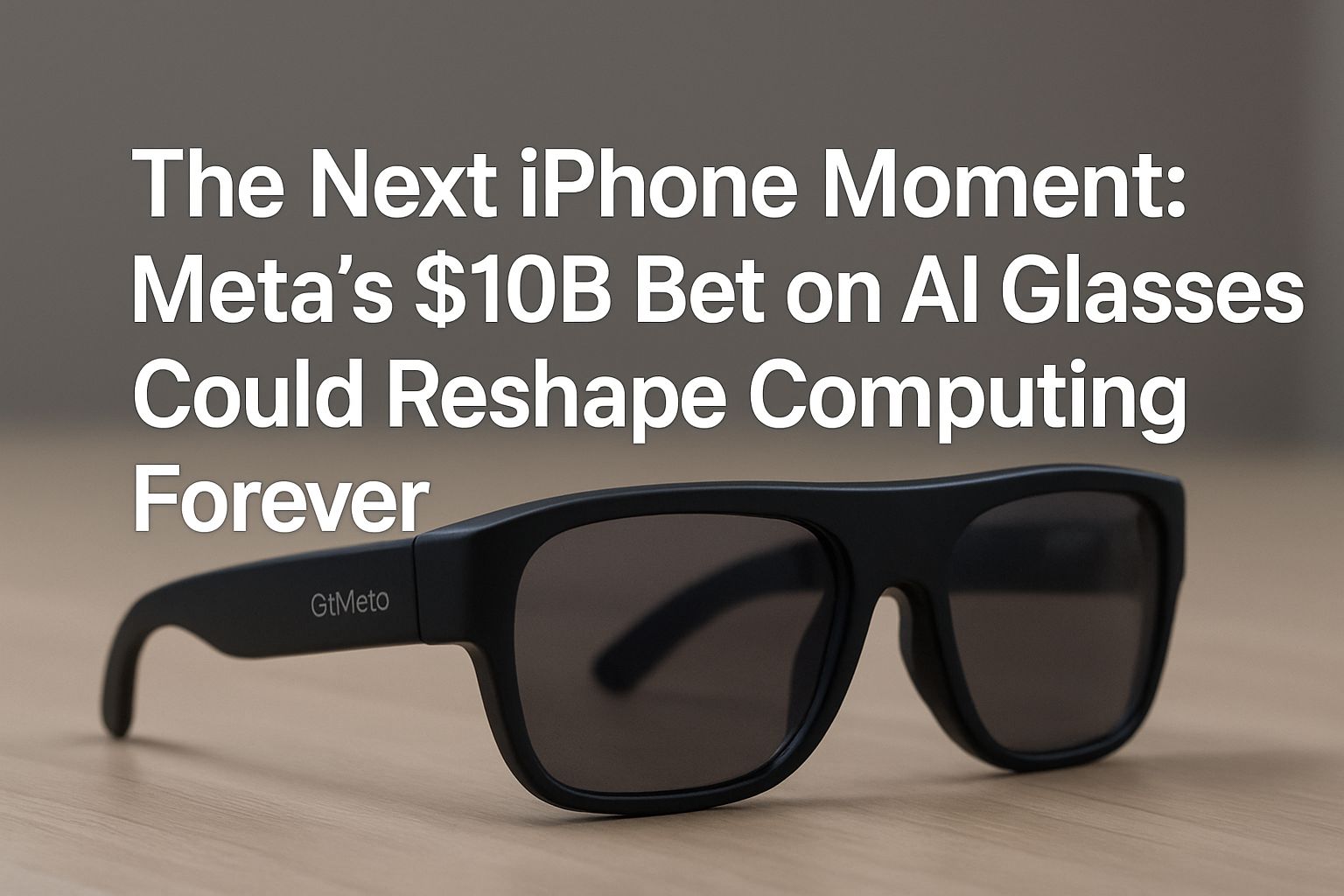Meta CEO Mark Zuckerberg believes we're 5-7 years away from a world where not wearing AI glasses puts you at a "significant cognitive disadvantage.
"His latest moves suggest this isn't just ambitious speculation, it's a calculated $10+ billion strategic bet that could define the next decade of computing.

The Numbers Don't Lie: Smart Glasses Are Exploding
The global smart glasses market is experiencing unprecedented growth, with projections showing explosive expansion across multiple research firms:
Market Projections:
2024: $1.93 billion (Grand View Research)
2030: $8.26 billion (27.3% CAGR)
Alternative projections: $4.13 billion by 2030 (29.4% CAGR, MarketsandMarkets)
Current Traction:
Meta sold 1 million Ray-Ban smart glasses in 2024
Ray-Ban Meta revenue tripled year-over-year in 2025
Total smart glasses market: 2.56 million units sold across all brands in 2024
Projected growth to 6.4 million units by 2028
Meta's Strategic Hardware Push: Beyond the Hype
September 2025 Reality Check: Meta just launched the Ray-Ban Display glasses for $799, featuring a built-in digital display controlled via neural wristband technology. This isn't vaporware—it's shipping September 30, 2025.
Key Features:
High-resolution display integrated into the lens
Neural interface for hands-free control
Real-time translation and live captioning
Navigation without phone dependency
Transcript saving to the Meta AI app
The Business Logic: With Reality Labs losing $4-5 billion annually on R&D, Zuckerberg is positioning Meta to bypass smartphone dependency entirely. Smart glasses represent a direct path to consumer relationships without Apple or Google intermediaries.
Strategic Implications: Apple's efficiency-first approach targets the same market with a fundamentally different architecture. Their models run entirely on-device, aligning with privacy positioning while delivering superior performance.
The Cognitive Disadvantage Thesis

Zuckerberg's July 2025 Earnings Call Prediction: "If you don't have glasses that have AI—or some way to interact with AI—you're probably going to be at a pretty significant cognitive disadvantage compared to other people."
The Market Opportunity:
3 billion people currently wear glasses globally
Trending toward 4 billion by 2035 (50% of the global population)
1-2 billion when including sunglasses wearers
Functional Advantages:
Proactive AI: Anticipate needs vs reactive responses
Contextual Intelligence: See what you see, hear what you hear
Seamless Integration: Overlay digital information on physical reality
Competitive Landscape: The Race Intensifies
Major Players Positioning:
Google: Reviving AR ambitions with Gemini AI integration
Samsung: Android XR partnership with direct ecosystem sync
Amazon: AR glasses planned for 2026 (TrendForce reports)
Snap: Continued investment in the Spectacles platform
Market Reality: Despite growth projections, smart glasses remain niche. For context, 160 million smartwatches were sold in 2024 vs 2.56 million smart glasses total.
The Infrastructure Requirements
Technical Challenges:
Battery life constraints
Processing power miniaturization
Display technology optimization
Social acceptance barriers
Meta's Investment: $10+ billion bet across Reality Labs, with full AR glasses (Orion) targeting 2027 deployment.
Risk Assessment: What Could Go Wrong
Privacy Nightmares:
Always-on recording capabilities
Data collection without user awareness
Regulatory backlash potential
Social Stratification:
"Haves vs have-nots" digital divide
Workplace adoption pressure
Educational inequality amplification
Technical Limitations:
Demo failures (Meta Connect 2025 live disasters)
Battery dependency
Network connectivity requirements
Strategic Implications for Business Leaders
The Verdict: Inevitable or Overhyped?
For Enterprise:
Early adoption advantage in productivity applications
Training and development opportunities via AR overlays
Remote collaboration enhancement potential
For Investors:
Component suppliers (displays, processors, sensors) positioned for growth
Software platforms enabling smart glasses applications
Content creation tools for AR/VR environments
Market Forces Driving Adoption:
Smartphone addiction is creating demand for hands-free alternatives
AI capabilities reaching practical utility thresholds
Miniaturization is making stylish form factors possible
Battery technology improvements enabling all-day usage
Historical Precedent: Zuckerberg's track record shows patience with long-term hardware bets. The metaverse pivot may have been premature, but smart glasses address immediate, practical user needs.Bottom Line: Whether Zuckerberg's 5-7 year timeline proves accurate, the smart glasses category is transitioning from novelty to necessity. The question isn't whether AI glasses will achieve mainstream adoption—it's which platform will capture the largest market share when they do.
For forward-thinking leaders: The time to understand and experiment with smart glasses technology is now, not after your competitors have established a market position. The next computing platform won't announce itself—it'll quietly become indispensable.
Market data compiled from Grand View Research, MarketsandMarkets, IDC, and Meta's Q2 2025 earnings reports. Apple's FastVLM performance claims verified through Hugging Face deployment and independent testing.
